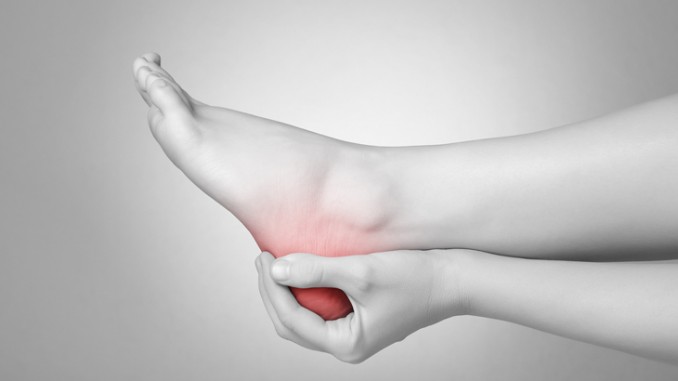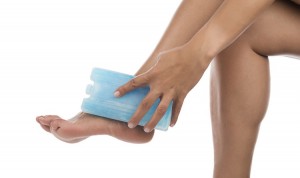
Understanding Plantar Fasciitis; cases, risk factors, symptoms and treatment
Plantar Fasciitis is a very popular and commonly known cause of heel pain to the adults. It is mostly caused by the ligament strain in the plantar fasciitis area in the fool of an adult. The plantar fascia is a thick tissue with fiber that covers the bigger part of the heel born. It spans from the heel born all through to the toes.
The fascia majority support the toes in the body and holds the weight of the body as the heel rises while a person is walking. This makes it a very important part and complex in its function. Most times, the plantar fascia gets strained from prolonged jumping, running, standing or any other strenuous duty carried out that directly touches on the heels.
- Symptoms of Plantar Fasciitis
Plantar Fasciitis is mostly noticed by the sharp pain beneath the sole of the food and the heel. Usually it is worse when you were initially standing on the foot; for instance when you stand up after seating for a long period of time or when you get out of bed after a long sleep or rest.
- What habits leads to Plantar Fasciitis?
If you run for a long distance, jump or march regularly; then there I a chance that you will soon get plantar fasciitis. Basically this is an indication that an activity that requires continuous or continual impact or pressure to the heel will easily trigger plantar fasciitis. Other risk factor that are related to this might include prolong vertical upright standing, obesity and bad ankle flexibility.
Athletes, to be specific: especially runners are very prone to this aliment: however some habit might increase plantar fasciitis risk factor or worsen the pain that is experienced when one suffers such. These factors include and not limited to:
– Inadequate running or training shoes to be used.
– High arches
– Flat feet
– Excessive training
– Running on inflexible surface
- How to treat plantar fasciitis.
 With the pain related to plantar fasciitis it is important to discuss the process or ways of treating it. Even though many conservatives’ treatments do not guarantee any improvement in the symptoms of plantar fasciitis, these practices might be the only way and a clear direction to relieve yourself from the regular pain that is caused by this aliment. Some of the commonly used treatment are;
With the pain related to plantar fasciitis it is important to discuss the process or ways of treating it. Even though many conservatives’ treatments do not guarantee any improvement in the symptoms of plantar fasciitis, these practices might be the only way and a clear direction to relieve yourself from the regular pain that is caused by this aliment. Some of the commonly used treatment are;
– Pain Medication
Most physicians will likely recommend some NSAID drugs like naproxen or ibuprofen to reduce the pain that is caused by plantar fasciitis. Just keep in mind that most painkillers will likely have side effect on the user; so you should consider weighing the benefits and the potential risk that is likely to be caused should you adopt the means.
– Tape Support
This is one of the amazing and good ideas (especially for people with “first step “pain): taping the foot having plantar fasciitis. Simply take four strips of tape and apply them gently over the affected foot. In case you have any allergic reaction to tape, consider using a hypoallergenic tape that may suite you condition causing you less harm.
– Adequate Rest.
Reducing athletic activities in your life and getting more rest might to a big extent help reduce or relieve the pain. Also restrain from constant heel impact through excess jumping, running, or walking. However, it has been noted that completely staying away from physical activities might even bring more harm such us stiffening and even more pain.
– Supportive footwear
A good shoe can make all the difference between having plantar fasciitis and not having it. Since this is caused by continual impact on the heels, absorbing the impact with a good shoe can save you a lot of pain unlike not using such shoe. Whichever activity you are opting into, just ensure you are wearing shoe that is supportive while at it.
You might also consider shoes with cushion soles, heel cups or gel pad inserts; they have been known to absorb impact pretty well and this can help keep you face during the activities. Read more information about plantar fasciitis shoes. Keep in mind that moving barefooted or wearing weak slippers might enhance the symptoms more even on carpeted floors.
– Steroid Injection
A steroid injection medication, if applied to the foot, could relieve the pain for a few weeks since that impact and the effect is temporal. Even though, the steroid medication can be repeated; keep in mind that continuous and repeated injection might make the foot’s tissues weak hence causing more trouble, this is not advisable.
– Massaging and Icing the affected area
A very good way to relieve pain is icing and massaging that affected area. Also consider carrying out the process again when going for the exercise or major physical activities that may strain the body by any chance.
– Casting
A short walking cast (the type that starts at the calf and cover the foot and ankle to the toes) would be an ideal treatment option. The best part of all is this sort of cast does not restrict your movement in any way when it is adopted.
– Stretching exercises
Consider engaging yourself in some basic stretching exercise as they can be very helpful when it comes to relieving pain from plantar fasciitis. Some good exercise include toe curls, the calf-plantar fascia stretch and toe towel curls. Just perform these exercises carefully so that you don’t fall into more pain.
There you have it all, everything you need to have to comprehend plantar fasciitis. On a final note; if you have no choice but to constantly engage in activities that might trigger plantar fasciitis. Then you might need to stick to major treatment options like wearing good shoes and proper rest. Just be sure to take good care of your health and don’t engage in anything if you can’t handle the side effects
About the Author: Anna Smith is chief editor at Healthankering. She’s a proud mother of three, passionate about health tips, beauty and ways to live healthier with more energy! She started Healthankering to provide advanced material about not only the best ways to get healthy, but also to entertain and create a great community.

Be the first to comment